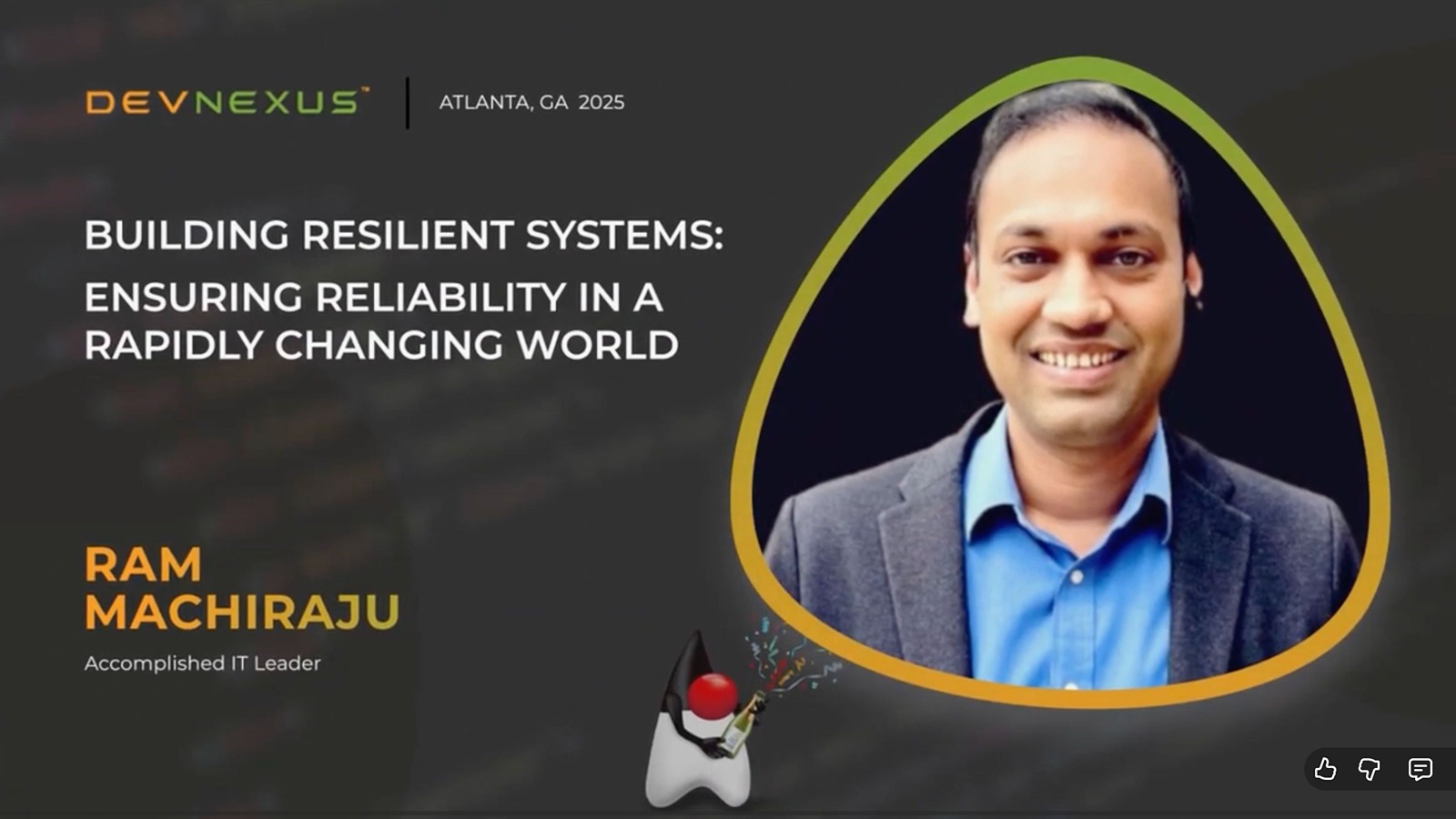Building Resilient Systems with Ram Machiraju

In an era where every system is interconnected and every service depends on another, resiliency is no longer optional—it’s mission-critical. In his Devnexus session, Building Resilient Systems, Ram Machiraju explored how even small oversights can cascade into massive global outages. A single missed patch, a misconfigured node, or an unmonitored disk space issue can halt operations, disrupt travel, interrupt healthcare, and cost billions. The lesson is simple but sobering: technology has moved from being a business enabler to being its foundation. To survive in this landscape, organizations must build resilience not just into their systems, but also into their operations and teams. Machiraju emphasized that resiliency is holistic—technical robustness, operational readiness, and talent agility must work together to ensure continuity when the unexpected happens.
To address this challenge, Machiraju outlined a practical model built on three core pillars: Resiliency, Recovery, and Governance.
- The Resiliency pillar centers on proactive engineering—redundant architectures, auto-failovers, and the use of AI Ops for predictive issue detection.
- The Recovery pillar focuses on minimizing downtime through robust Disaster Recovery (DR) strategies, secondary site operations, and well-rehearsed incident playbooks.
- Finally, the Governance pillar ensures that every deployment meets defined resiliency standards, balancing feature delivery with architectural integrity.
Together, these pillars create a framework where resilience is measurable rather than aspirational. Machiraju encouraged organizations to develop clear maturity models across each pillar—starting with mission-critical applications and expanding outward—so that teams can track their progress with transparency and accountability.
A key takeaway from the session was the importance of measuring resilience maturity through structured benchmarking. Machiraju introduced a Resiliency Maturity Curve (ranging from Level 0 to Level 5) that helps teams quantify their state of readiness—for example, being at “DR2” with a roadmap to reach “DR4.” This approach transforms resilience from an abstract ideal into a concrete engineering target. However, the most critical insight came from a reminder rooted in realism: plans only matter if they hold up under stress. Citing Mike Tyson’s famous words—“Everybody has a plan until they get punched in the mouth”—Machiraju underscored the role of Chaos Engineering in validating system assumptions. By running live-fire tests that simulate real-world failures, teams can uncover hidden weaknesses before they cause actual downtime.
The overarching message for developers and architects is clear: invest in resiliency now, not after a failure exposes the gaps. As systems become more complex, resilience becomes the ultimate measure of engineering excellence—and the foundation for business survival in a connected world.
🎥 Watch the Session
🚀 Join Us Next Year at Devnexus
Explore more sessions like this at Devnexus 2026 — where the world’s leading Java and cloud-native developers come together to share insights, challenge assumptions, and build the next generation of resilient, intelligent software systems.



